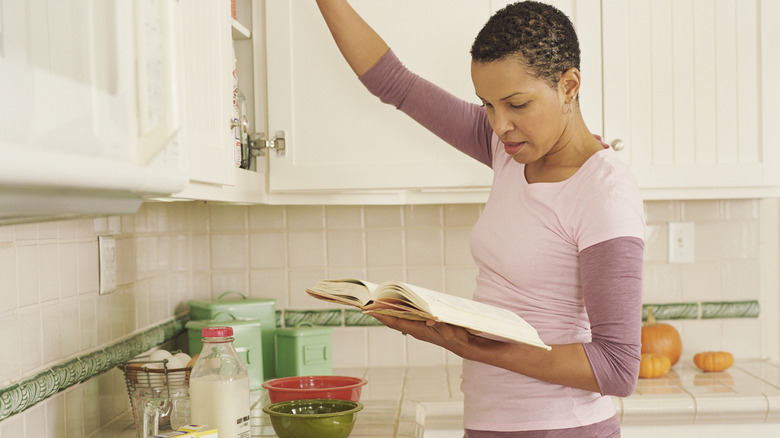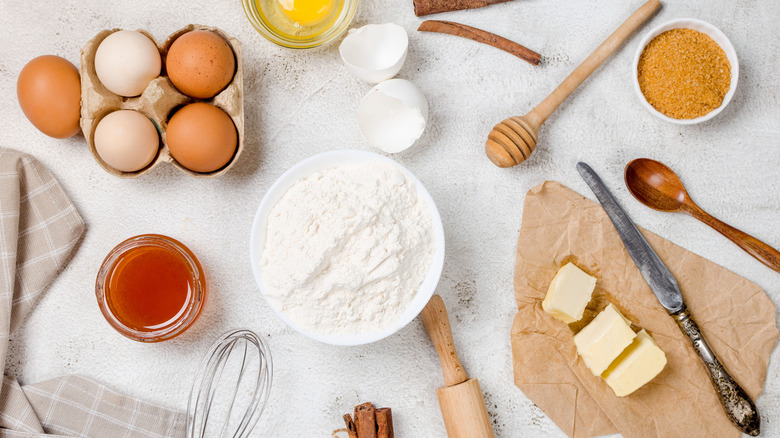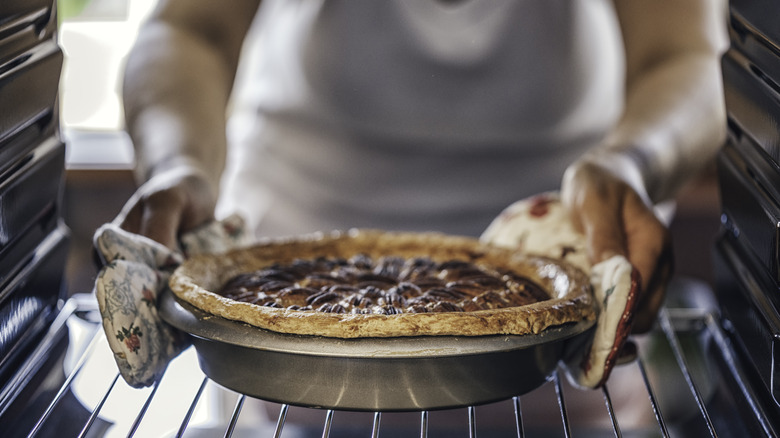The Genius Recipe Reading Hack That Changes The Baking Game
In this age of celebrity chefs and cooking shows you've probably come across the phrase mise en place, which means to have all your ingredients measured out before you start assembling a recipe. It's a must in commercial kitchens, but even at home it's a good practice to have everything ready ahead of time, especially when you're baking.
Still, the urge to start cracking eggs and mixing ingredients while you're reading a recipe for the first time can be very strong. However, if you start cooking without knowing the rest of the recipe you'll likely find yourself stuck on a step while the mixer is running or the timer is ticking.
Instead of winging it, do what professional bakers do and read the recipe backwards at least once before you start. Reading the recipe from the end to the beginning will quell the urge to start cooking, since you obviously can't start with a baked cake. More realistically, a back-to-front reading will let you know exactly what you need before beginning, including equipment and oven temperatures.
Approach your recipe like a scientist
Cooking incorporates a lot of science, but there is a fair amount of leeway when you're making many recipes. When it comes to baking, however, the process is more of an exact science and you can't get away with measuring ingredients from the heart instead of with a kitchen scale. Remembers that baking recipe developers do a lot of testing and tasting to make sure their recipes work perfectly again and again. So when you're looking at a baking recipe, think of it as a controlled science experiment — because, in a way, it is. If you recall high school chemistry class, to pull off a proper experiment you must have all your tools and ingredients ready before you start mixing anything.
To be truly prepared for any twists and turns in a recipe, read the recipe all the way through from start to finish, and then read it again from finish to start. You can even work backwards to gather all the pots and pans you'll need, set the oven at the right temperature, prepare any special objects, and then scale all your ingredients into individual bowls — just like you see professional chefs do on cooking shows.
Reading backwards also helps with substitutions and timing
Reading the recipe backwards will not only force you to get all your ingredients and equipment together, it will also help you decide if you can make any substitutions. If you've read through the steps of the recipe, you will have a better understanding of how an ingredient will be used and if you can substitute it.
A backwards read will also give you a better sense of timing. This is especially useful is there are steps that involve extra prep, such as whipping cream, making brown butter, or resting dough. While most recipes tend to include an estimated time at the beginning, they're only as good as their authors' experiences. Only you know how long it really takes to perform a given task in your kitchen.
Only after you have all your ingredients measured, the baking pans greased, and the oven warmed up, should you start mixing things. While it takes a little more time to go backwards through a recipe, you'll find that the actual assembly steps will be far more seamless.


